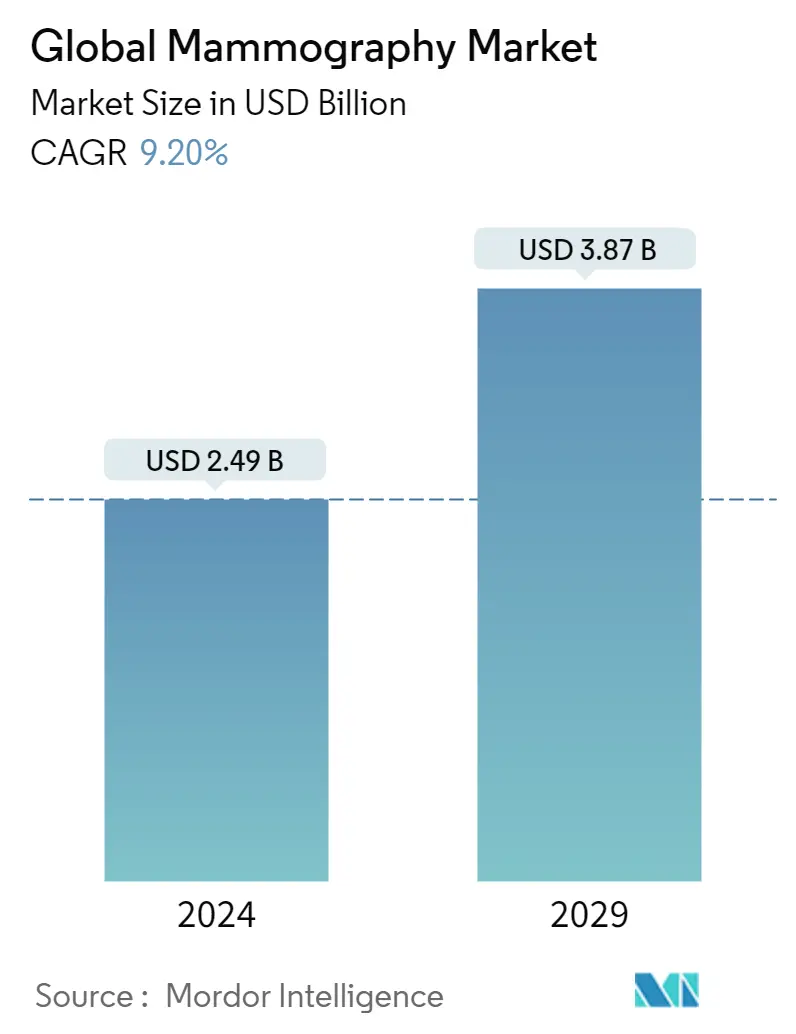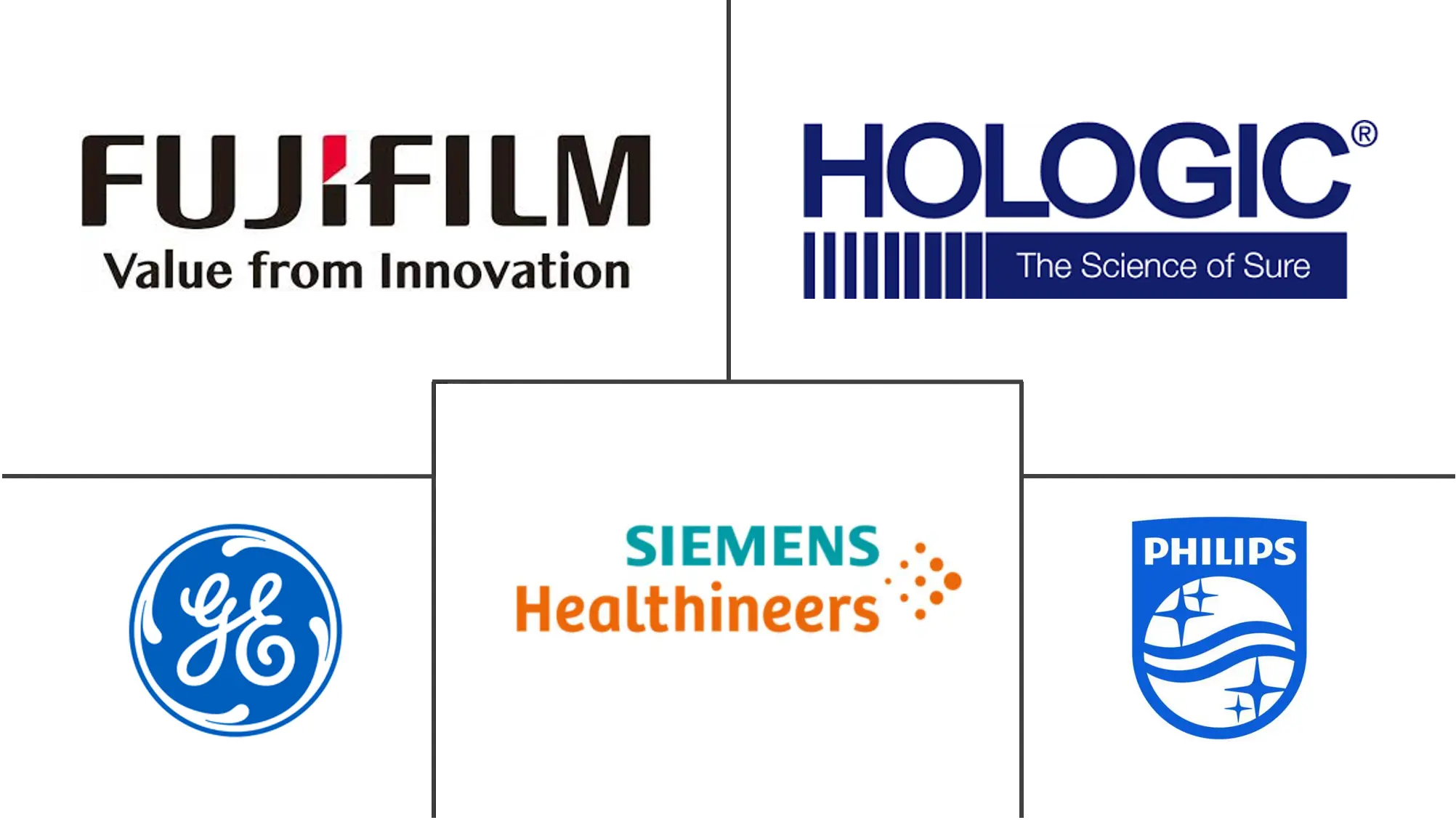Market Size of Global Mammography Industry

| Study Period | 2019 - 2029 |
| Market Size (2024) | USD 2.49 Billion |
| Market Size (2029) | USD 3.87 Billion |
| CAGR (2024 - 2029) | 9.20 % |
| Fastest Growing Market | Asia Pacific |
| Largest Market | North America |
Major Players
*Disclaimer: Major Players sorted in no particular order |
Need a report that reflects how COVID-19 has impacted this market and its growth?
Mammography Market Analysis
The Global Mammography Market size is estimated at USD 2.49 billion in 2024, and is expected to reach USD 3.87 billion by 2029, growing at a CAGR of 9.20% during the forecast period (2024-2029).
The COVID-19 pandemic has been continuing to transform the growth of various markets, and the immediate impact of the outbreak is varied. Initially, the COVID-19 outbreak showed a strong impact on the mammography market as many hospitals and screening centers remain closed due to lockdowns, and the demand for mammography procedures is expected to be subdued in the short term. For Instance, According to an article titled ' Screening Mammography Recovery after COVID-19 pandemic facility closures: Associations of facility access and Racial and Ethnic Screening disparities' published in June 2022, mammography volumes decreased in 2019 and then increased by 61% in 2021. Thus, this is expected to have a significant impact on mammography device manufacturers, as their demand has increased significantly in post pandemic period.
Moreover, the major factors responsible for the growth of the mammography market include the growing prevalence of breast cancer, technological advancements in breast imaging, and investment from various organizations in breast cancer screening campaigns. According to a Globocan report in 2020, breast cancer was the most prevalent type of cancer, with a prevalence rate of 11.7%. According to the same report, the five-year prevalence rate for both sexes showed that Asia had the highest number of people affected at 3,218,496 (41.3%), followed by Europe at 2,138,117 (27.4%) and North America with 1.189,111 people (15.3%). Such high prevalence rates of breast cancer are one of the main reasons the demand for mammography devices is expected to increase, as they may be used for diagnostic purposes.
Furthermore, according to the Mammography Quality Standards Act (MQSA) National Statistics of the United States, as of August 2022, about 39.5 million mammography procedures as compared to 38.6 million mammography procedures by August 2021 in the United States. Therefore, the increasing number of mammography tests performed is likely to have a positive impact on the growth of the market in countries, like the United States. Hence, the aforesaid factors help in driving the growth of the market studied. Many major tech companies are using AI (artificial intelligence) models that can automatically detect breast cancer. For instance, in June 2020, Vara, a Berlin-based company raised EUR 6.5 million in Series A funding for AI-powered breast cancer screening software. These programs and technological advancements associated with mammograms are expected to boost the market growth. Additionally, In June October 2021 Avva Seva trust held a month-long breast cancer awareness campaign and screening camp for teachers in Dharwad district, India.
Also, in November 2020, Hologic Inc. and RadNet entered into a collaboration to advance the development of artificial intelligence tools in breast health. The collaboration may include data sharing, R&D, and an upgrade of RadNet's fleet of Hologic mammography systems to state-of-the-art imaging technology. Furthermore, in September 2020, GE Healthcare and Candelis Inc. entered into a collaboration to enhance mammography workflow, image management, and storage capabilities for the Senographe Pristina Mammography System. Thus, the above-mentioned factors, coupled with the changing market needs, are expected to drive market growth.
However, adverse effects from radiation exposure and risks associated with mammography are expected to pull back the market growth over the forecast period.
